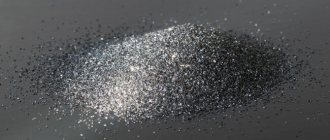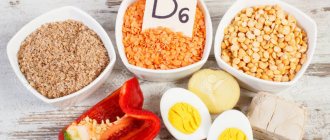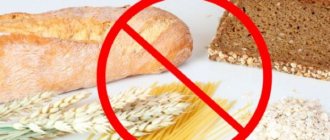Gluten is a complex protein found in grain crops: wheat, barley, rye. It gives the dough softness, elasticity, makes it airy and fluffy, which is why bakery product manufacturers love it so much. It is also found in soft cheeses, sauces, and oils. Over the past 2 years, the media and forums on the Internet have been actively promoting a gluten-free diet.
Increasingly, product packaging is labeled “Gluten Free.” Typically, such products are very different in price from similar ones that are not marked. But is it worth paying extra for this inscription? This element is indeed contraindicated for some people, but how many are there really and why is it not always rational to give up cereal protein? Read our article and we will tell you the benefits and harms of gluten, explain where it is, what products it is found in, and provide a complete list of foods that contain it.
Our additional services: Bioimpedance | Marutaka Massage | Pressotherapy | Ion-Detox
What is celiac disease
This is a disease associated with impaired digestive function and toxic damage to the gastrointestinal tract. Pathological changes are associated with damage to the villi of the small intestine by complex proteins contained in cereal seeds. These include gluten and closely related avenin and hordein. These substances “smooth out” the intestinal villi, which become flat and “ripped off.” Because of this, the absorption surface decreases, more fluid is released, and fewer nutrients enter the blood.
Comment from Elena Morozova, a nutritionist at the weight loss clinic:
The above is not about an allergic, but a toxic reaction. It occurs in any tissue of the body, and intensifies when the permeability of the intestinal wall is impaired. Pathogenic substances are absorbed into the blood and spread throughout the body.
This disease has isolated, asymptomatic forms. They are also called "erased". These include long-term anemia that cannot be corrected with medications and other therapies. A pathological lack of hemoglobin in the blood can be directly related to intolerance to gluten and other similar complex proteins. According to the latest statistics, every 100 people suffer from hidden celiac disease. This is 30% of the population.
Medicine has known about this disease for a long time. Back in the 1st century AD. e. The outstanding ancient physician and philosopher, Aretaeus from Cappadocia, wrote about a certain childhood and female “intestinal disease” that had similar characteristics. At different times, the disease was called differently: watery diarrhea, enteropathy, non-tropical sprue. The symptoms were described in detail in one of his works by the English doctor of the late 19th century, Samuel Guy. He studied how the disease progresses in children and talked about sudden weight loss, uncontrolled diarrhea, fluid loss, and developmental delays. The descriptions of the little patients were eerie: very thin, with thin arms and legs and huge swollen bellies.
Now things are different. Often celiac disease does not manifest itself externally at all. The only symptom indicating its presence may be low hemoglobin, which cannot be raised with medications.
Previously, much less was known about this disease. It was believed that it occurs only in childhood and only in the Caucasian race. Nowadays they talk more about the disease, because modern research has provided extensive material for discussion. We found out that the disease can manifest itself at any age, and after 50 years its consequences are much more serious: the risk of developing cancer increases. Gluten intolerance often coexists with type 1 diabetes mellitus, autoimmune lesions of the joints and thyroid gland.
Comment from clinic nutritionist Elena Morozova:
To identify celiac disease, it is necessary to conduct a comprehensive examination of the patient. Some European clinics have a testing system that allows you to determine its presence with 100% probability. In Europe, this disease is more common. For example, in Finland every 60 inhabitants suffer from it. There are more than 30 markers that determine the body's response to different types of gluten. But people who are diagnosed with an illness are not classified as disabled, as is the case in our country. All they need for treatment is specialized nutrition.
HOW IS THE DIAGNOSIS MADE?
WHO warns: every day there are more and more people in the world diagnosed with gluten intolerance (in the WHO report I found the figure “UP TO 90% of the population” - but I don’t want to believe in this).
“The diagnosis of “celiac enteropathy,” or, in other words, gluten intolerance, is indeed not easy to make,” says Evgenia Belousov.
First, you need to take a blood test for antibodies to gliadins (another name for gluten from wheat).
If the readings exceed the norm, the doctor may suspect a disease. But for an accurate diagnosis, a second step is needed - a biopsy of the small intestine. “Of course, not all patients agree to take this test,” says the doctor. And this is understandable. Gluten intolerance, according to doctors, often occurs with symptoms that, of course, worry a person, but much less than the prospect of a small intestinal biopsy. A gluten allergy does not necessarily mean severe diarrhea: a person may be bothered by, say, fermentation, bloating, pain or constipation. “The same symptoms can occur with pancreatitis or, say, with irritable bowel syndrome - although with this syndrome the large intestine suffers, and with celiac enteropathy - the small intestine,” says Evgeny Belousov. “Therefore, we can only say for sure after a biopsy.”
“Are there really no other ways, doctor?” I ask, remembering how many times my stomach has hurt over the past week. But it turns out there is another way.
Find out more about our weight loss programs:
We deal with this problem less. Interest in it has increased in recent years, but most of our medical institutions do not have the necessary equipment and, if tests are carried out, they are carried out in a compressed form. But even this is enough to transfer the patient to the right diet, which will allow him to feel comfortable. In the broadest sense, celiac disease cannot be called a disease; rather, it is an intolerance to certain foods. People who are lactose intolerant stop eating dairy products. Citizens whose bodies cannot accept cereal protein should do the same. But this does not mean that the entire population should give up their usual food. For healthy people, the entire list of “gluten” products is completely safe. They are digested like any other proteins.
Why is gluten found in wheat?
Nowadays, the wheat that ends up on the table in completely different products has nothing in common with that which was grown several decades ago. All modifications of crops carried out to increase yield are experimental mutations.
Why does wheat contain gluten?
With the help of experiments, manufacturers receive:
- improved flour characteristics: appearance, baking ability, taste.
- resistant varieties that can tolerate significant temperature changes, diseases, droughts, and pests.
Therefore, the cultivation of modified cereals cannot be done without the use of a large number of chemical fertilizers and various types of herbicides. The consumption of such products is followed by a growing wave of disorders not only from the digestive system, but also from the entire human body.
Scientific research confirms that 60% of Europeans have symptoms of celiac disease, an intestinal disease caused by gluten intolerance in cereals. Pathology is a serious problem of the 21st century.
What foods contain gluten: complete list
The problem with modern Russian reality is that you cannot unconditionally trust the labels on packages. Even if a pack shouts in large letters about the absence of a harmful substance in its contents, this does not mean that it really is not there. Read the composition. If it contains wheat, rye, barley, or oatmeal, put the product aside. There are no technologies either in Russia or abroad that could “pull out” complex protein from cereals; this is a myth.
You need to know which manufacturer produced the food, since buns may be baked on one line and gluten-free bread on another. And some part of the substance will inevitably end up on the second line. But there are organizations that specialize in producing gluten-free products. Their products are more expensive and harder to buy, but if you really suffer from celiac disease, you can always find a way out of the situation. For example, bread and pasta are easy to make yourself. You can use rice or corn flour for this.
But we are not encouraging you to start following a gluten-free diet. It is only appropriate if your body really cannot tolerate this component. Without consulting a doctor and test results, this cannot be stated with certainty. By deciding to limit yourself, you will not only deprive yourself of tasty and familiar food, but also exclude the possibility of making a correct diagnosis. After 2-3 months, the intestinal mucosa will be completely restored, the antibodies aimed at fighting the harmful substance will disappear, and it will be more difficult to prove that you are sick. In this case, expensive genetic testing will have to be done to diagnose the disease.
The list of gluten-containing products in our band is quite extensive. The substance itself is found in only 4 cereals, but the lifestyle and nutritional system of the average Russian is structured in such a way that it appears in almost any food that we consume. We are talking about wheat, rye, barley and oats. The amount of complex protein in the latter is so small that 95% of people with gluten intolerance eat oatmeal and feel great about it.
For people suffering from celiac disease, we offer a list of gluten-containing foods, and this list is the most comprehensive of those presented on the Internet:
- Cereals: wheat, rye, barley, oats, kamut, spelled, triticale, emmer.
- Porridges: semolina (semolina), oatmeal, millet, couscous, bulgur, spelt (faro, spelled, zanduri), pearl barley (regular, Dutch, barley), harisa, barley, harisa.
- Instant soups and cereals.
- Canned meat, fish, vegetables.
- Semi-finished products: pancakes, dumplings, dumplings, khinkali, meat preparations.
- Dairy products and ice cream that contain stabilizers.
- Baby canned food.
- Pasta from the above mentioned cereals.
- Crab sticks.
- Bakery products made from wheat, barley, rye, oats.
- Instant coffee, cocoa, chocolate.
- Tea with additives.
- Sparkling water.
- Processed cheeses.
- Soft varieties of cheese.
- Sausages, sausages.
- Chewing gum.
- Mustard.
- Mayonnaise.
- Any store-bought sauces, including soy sauce.
- Breadcrumbs.
- Store-bought juices, fruit drinks, kvass.
- Products containing soy.
- Churchkhela.
- Jelly.
- Jam.
- Dark and milk chocolate with wafer crumbs.
- Caramel.
- Vegetable oils.
- Butter.
- Nut butter.
- Bouillon cubes.
- Salad dressings.
- Whiskey.
- Beer and beer drinks.
We have given you a list of all high gluten foods rich in this element. But for people with intolerance to this element, it is not only the high concentration that is dangerous.
Look at our Clients' Acknowledgments and Success Stories - View
If you want to lose weight, get rid of bloating and pain caused by poor nutrition, you don't need to go on a gluten-free diet. It is enough to correlate the number of calories you burn with the amount of food you eat per day. Specialists at the Elena Morozova Weight Loss Clinic will help you normalize your diet. Contact them for help, and you won’t have to starve and give up your favorite food completely.
Can it be cured?
Allergic reactions and protein metabolism disorders can be a consequence of celiac disease. The exact cause of this pathology, which causes the negative effects of natural protein on the body, is unknown to science. It is impossible to completely get rid of celiac disease. But it shouldn’t be considered a death sentence. It will not cause any harm if you follow your diet. Eliminating the provocateur of negative reactions prevents the development of negative changes and complications. Eating gluten-free products allows you to completely maintain the normal functioning of systems and organs and not suffer from the symptoms of gluten intolerance. No medications are required for this disorder.
Daily gluten intake for adults and children
The human body's need for proteins is determined by the need to establish a balance of nitrogen, which is constantly lost during the metabolic process. A lack of protein food invariably leads to the fact that the body is forced to break down its own protein to maintain balance, which negatively affects the functioning of internal organs.
The consumption rate depends on gender, age, type of activity and the state of the external environment in places of residence. The bulk of the protein consumed should be of animal origin.
List of foods containing gluten
Plant proteins supplement the daily requirement and are represented in the diet of most people by gluten contained in bread, pasta, bakery and confectionery products, and meat products. The list of gluten-containing products goes on.
The table below shows the daily consumption rates for different categories of adults and children:
| Category of population by occupation | Age parameters | Daily protein requirement, g | |||
| Men | Women | ||||
| Total proteins | Including plant | Total proteins | Including plant | ||
Knowledge workers | 18-40 40-60 | 96 89 | 38 36 | 82 75 | 33 30 |
| Workers with low physical activity | 18-40 40-60 | 99 92 | 45 42 | 84 77 | 38 34 |
| Workers with average physical load | 18-40 40-60 | 102 93 | 46 42 | 86 79 | 39 35 |
| Heavy physical workers labor | 18-40 40-60 | 108 100 | 54 50 | 92 85 | 46 43 |
| Unemployed older people | 60-70 Over 70 | 80 75 | 32 30 | 71 68 | 28 27 |
| Students | — | 113 | 45 | 96 | 38 |
| Athletes during competitions | — | 154-171 | 77-85 | 120-137 | 60-68 |
| Women expecting a baby | — | — | — | 109 | 44 |
| Nursing mothers | — | — | — | 120 | 48 |
| Babies | 0,5-1 1-1,5 1,5-2 | 25 48 53 | 5 -0 12 13 | ||
| Preschool children | 3-4 5-6 | 63 72 | 19 25 | ||
| Children of primary school age | 7-10 | 80 | 32 | ||
| Children Wed. school age | 11-13 | 96 | 38 | ||
| Teenagers of high school age | 14 -17 | 106 | 42 | 93 | 37 |
Gluten free diet for weight loss
Recently, show business stars are simply obsessed with the newfangled gluten-free diet, which helps to lose weight. There are even admiring reviews from celebrities showing off their curves. A gluten-free diet involves limiting foods containing gluten, and more restrictive types of diets completely exclude such foods. Among doctors there are also supporters and opponents of such nutrition.
Undoubtedly, a gluten-free diet has certain advantages:
- reduces the amount of high-calorie foods in the diet - foods with gluten contain many calories;
- increases the amount of vegetables in the diet - vegetables are loaded with vitamins and other beneficial components, and are also a source of healthy fiber;
- contributes to the health of the human body.
Opponents of the gluten-free diet criticize this approach to nutrition. In their opinion, products containing gluten provide the human body with important components, so they should not be completely excluded from the diet. In addition, the quality of food is also important. If it is natural, then the gluten content in it will not harm your health. If, in addition to gluten, it contains preservatives and dyes, it should not be eaten.
On a note!
According to scientists, many manufacturers include flavors, sugar, fat and other substances in their products to compensate for the lack of gluten. In fact, such products, although gluten-free, pose a greater danger to the human body than foods containing gluten, and contribute to the accumulation of fat deposits. READ OTHER INTERESTING ARTICLES ON THE TOPIC
- Why take Omega-3?
- What is gluten?
- Gluten Free Products









